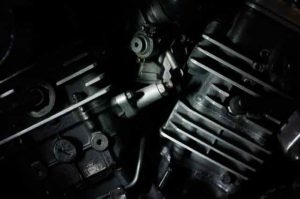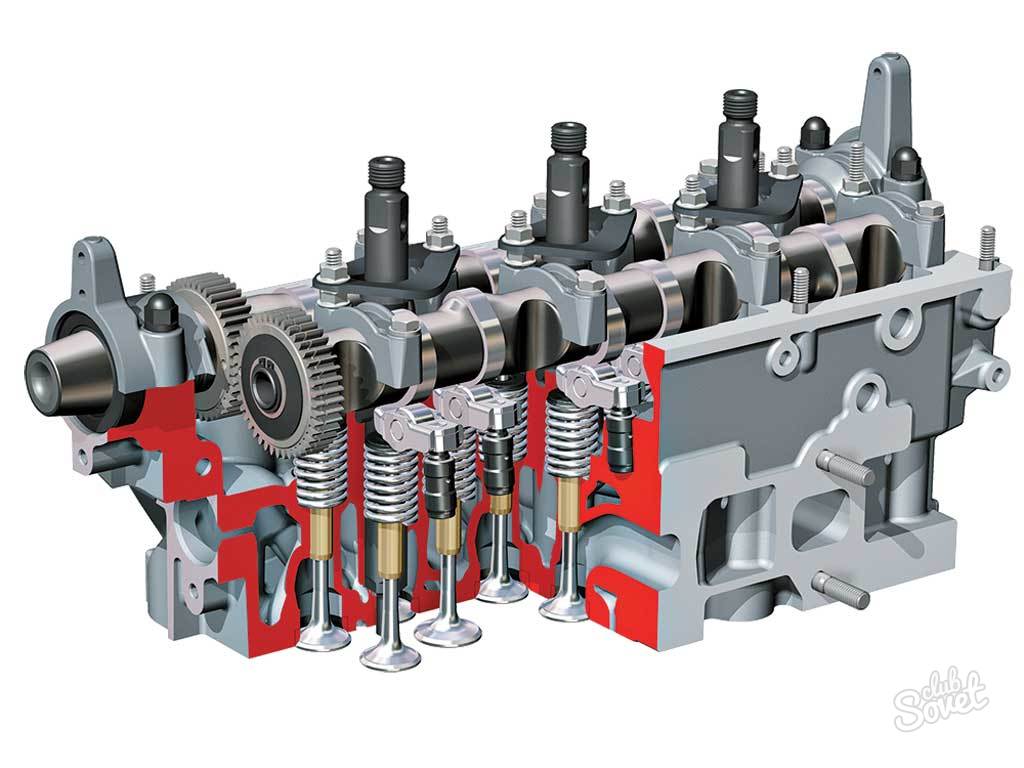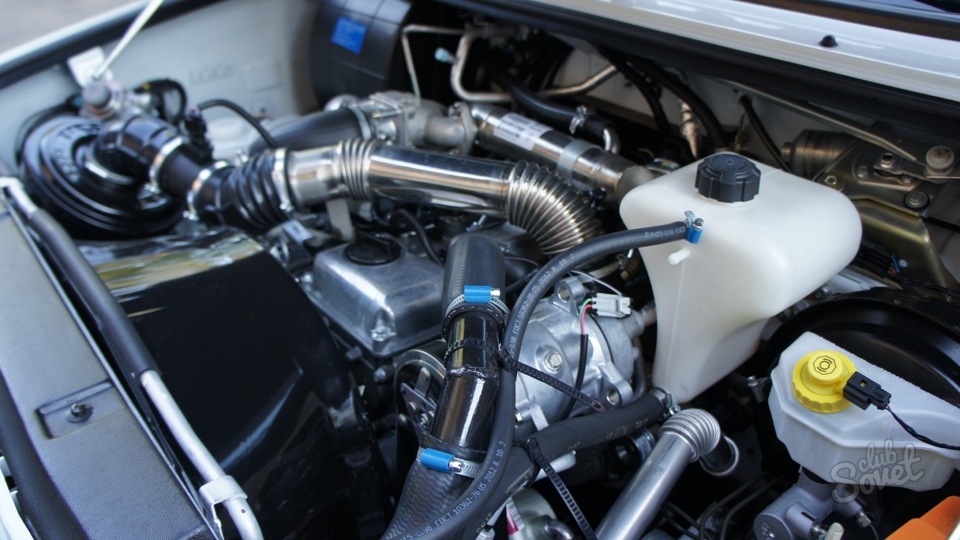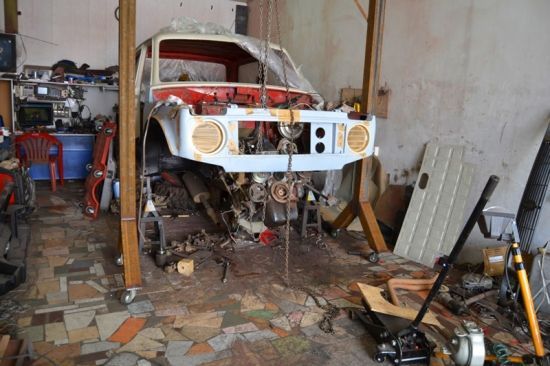Replacing a car's gasoline engine with a diesel one
The ability to convert a car to diesel fuel is a relatively young trend that is actively spreading. UAZ is an automobile unit, the conversion of which to a diesel engine will be not only simple, but also effective in terms of economy.
In the process, you will need a number of improvised tools:- diesel engine;
- set of bolts with nuts;
- a set of keys;
- engine oil;
- lifting system or professional device;
- coolant.



![]()

If, after following the steps, the car does not start, makes strange noises, or smells bad, do not continue. Apparently, you missed some point, and in this case it is worth disassembling the entire system in reverse order, reinstalling it or inviting a competent specialist.
Every year the popularity of diesel cars is steadily increasing. Indeed, modern diesel engines are economical, reliable and have excellent dynamic characteristics. It's no surprise that many car owners are thinking about changing gasoline new engine of your car to economical diesel. We will tell you whether it is possible to replace a gasoline engine with a diesel one and how to upgrade your car in this way.
Does it make sense to change a gasoline engine to a diesel
At first sight, this work presents no difficulty. However, in reality, it will be necessary to replace not only the engine, but also a number of other complex and expensive components.
So, the fuel tank is subject to replacement, the electronics that control the operation of the engine, the exhaust system, gearbox, drives and a number of other elements are changing. Therefore, with only one replacement power unit you won't get around.
Among other things, it must also be taken into account that the replacement of the engine must be documented. In this case, you should wait for permission to re-equip from NAMI and write an appropriate application to the transport department of the traffic police. If the tuning of the car is not documented, then in the future there will be problems with its re-registration and subsequent operation.
If you still decide on such a modernization, then you should remember that it is simply impossible to carry out such auto repair on your own. It is necessary to contact the appropriate specialized repair shops, whose specialists will carry out such complex work and replace the engine on your car.
Changing petrol to diesel
 The car owner who decided on such a replacement of the car's engine, first of all, should choose the diesel power unit used. It is best to use such power units from the same manufacturer with similar power and volume parameters.
The car owner who decided on such a replacement of the car's engine, first of all, should choose the diesel power unit used. It is best to use such power units from the same manufacturer with similar power and volume parameters.
Remember that due to certain design features, diesel engines are larger than gasoline engines, so it will be impossible to put engines of the same volume in the engine compartment. As a result, the car owner should choose diesel power units, which are smaller in their working volume than the base gasoline engine.
In the event that the car owner wants to install a powerful diesel engine, which at the same time would be economical in operation, then it is often necessary to replace most of the parts and assemblies in the engine compartment. In fact, we get new car in the old box. Whether the game is worth the candle and whether such costs will pay off is up to the car owner to decide in each case. It is quite possible that after a serious accident, when the used motor and gearbox became unusable, it would be economically justified to carry out such a replacement and supply a contract or new diesel engine with the necessary attachments.
You should also decide on the gearbox used. It is best to carry out a comprehensive replacement of the engine and gearbox, and it is recommended to use the base transmission from the power unit of your choice. Such a box will have gear ratios optimized to work with a specific power unit.
But if you plan only to replace the motor itself, and leave the box the same, then you need to remember that the main torque and thrust of a diesel engine falls on low revs. Gearboxes from gasoline engines are simply not adapted to such loads, therefore, even if such a transmission can work with a new engine, it will soon be needed. overhaul and replacement.
The fuel tank and fuel supply system also need to be replaced. A new fuel line is being pulled and a new tank is being installed. A high pressure fuel pump is also installed, which is responsible for pressurizing the injection system. It is required to use new control electronics, which is adapted to work with diesel power units. IN individual cases it is required to replace the drive with modifications from diesel models. All this invariably leads to a significant increase in the total cost of work.
The cost of such repairs can be extremely high. In this case, it is necessary to take into account not only the cost of the replaced spare parts, but also the prices for the work of the craftsmen who will carry out such repairs.
The car owner should also remember that it is required to carry out the appropriate re-registration of the vehicle, while obtaining all the relevant permits. It is this kind of paperwork that can stretch for a long time, while you will have to waste your time and money paying for various examinations, certificates and other papers.
It is difficult to perform such tuning on your own without proper work experience. In this case, it is necessary to have knowledge not only of the design of the motor and gearbox, but also to be well versed in the entire structure of the car. Even advanced car owners simply do not have such knowledge and work experience, so it is necessary to contact only specialized workshops for such a replacement of the power unit.
Conclusion
Replacing a gasoline engine with a diesel engine is a complex and complex work that will require significant financial costs from the car owner. It is much easier and cheaper to just change your car by choosing the modification you like with an economical diesel engine. Whereas, when replacing a gasoline engine with a diesel one, it will be necessary to purchase a new engine, gearbox, and numerous expensive attachments. The cost of such work will be extremely high, among other things, you will need to obtain appropriate permission from the traffic police and other supervisory authorities.
Given current fuel prices, replacing a gasoline engine with a diesel engine is becoming very interesting for many car owners. Additional bonuses are the following arguments: diesel engines are considered more reliable (with proper care they reach up to 500,000 km without major repairs), they pull remarkably at low speeds, almost any diesel fuel will do, they depend little on electrics.
The corrosive motorist needs to figure out: what exactly will have to be changed? And the alteration will most likely be subjected to many nodes. We will have to reconstruct (consider - change) the fuel tank, adjust the electrician, modify exhaust system, sometimes - to adapt the gearbox. And this is just a short list. Often you even have to change the torpedo of a car!
On his own, at home (garage) conditions, this is only possible for a professional auto mechanic, for example, on vacation, and even then with the involvement of acquaintances who are specialists in parallel areas. So the appeal to the service station, and even certified, having the right to engage in such re-equipment, is guaranteed to you.

What do you need?
Replacing a petrol engine with a diesel one- this is not the same as replacing candles. The list of actions consists of many items:
- return the car to the appropriate organization (and pay it);
- write an application to the traffic police (transport department);
- receive a signed application and send it to NAMI;
- having learned the details, pay for the examination;
- wait for NAMI's permission to re-equip;
- collect a bunch of certificates to make changes. And be prepared for the fact that the name of a piece of paper, previously not mentioned, but categorically necessary, will constantly appear in front of your nose, for which you will have to go somewhere during working hours;
- vehicle declaration: filling it out, correcting possible errors, proving with foam at the face that everything is correct;
- “knocking out” a certificate for - and this is almost the worst thing! You will have to walk a lot, often and for a long time;
- transport tax (even if your previous one is still valid);
- inspection. Yes, premature, yes, again, yes, wait, yes, swear;
- inspection before conversion;
- regular payments: for an application for changes, a re-equipment check (in principle, the same technical inspection, but for other reasons), registration and a certificate of release.
- It remains to receive a new certificate of registration, TCP with all the changes made, pass the next technical inspection - and go ahead, explore the open spaces on converted vehicles.
Some clarifications
The described process, of course, should be observed, but one can strive for the ideal indefinitely. In practice, usually after installing a new engine and submitting an application, people go, as they say, “to blue eye", explaining to the traffic police officers in the style of" well, here, the documents are coming. In most cases, it rolls, but if you don’t like stressful situations, put the car on a joke until you receive all the certificates, registrations and paperwork. And if you don’t want to wait, take with you the whole pile of documents, including examination data - a kilogram of waste paper has a calming effect on many traffic police officers.
Do you still want to change petrol to diesel? Most people who aspired to do this either abandoned the idea or regretted its implementation.
Diesel or gasoline
Any fuel has its own characteristics when it is used. If you are used to using gasoline, do not rush to change it to something else. You will not get used to the features of the new gas station immediately, and you will not soon learn about the shortcomings. Of course, a diesel engine can even work in water (until it gets into it), but in the cold - and they are not rare with us, to put it mildly - it starts up badly (). Very often it is necessary to undertake rather tedious "squats" in order to simply leave the yard.
Maintenance of the fuel motor is much more expensive than gasoline; even for "home" diagnostics, you will have to fork out for some equipment. You have to change the oil more often - and top it up in much larger quantities. A bay of bad diesel fuel can destroy the engine the first time.




